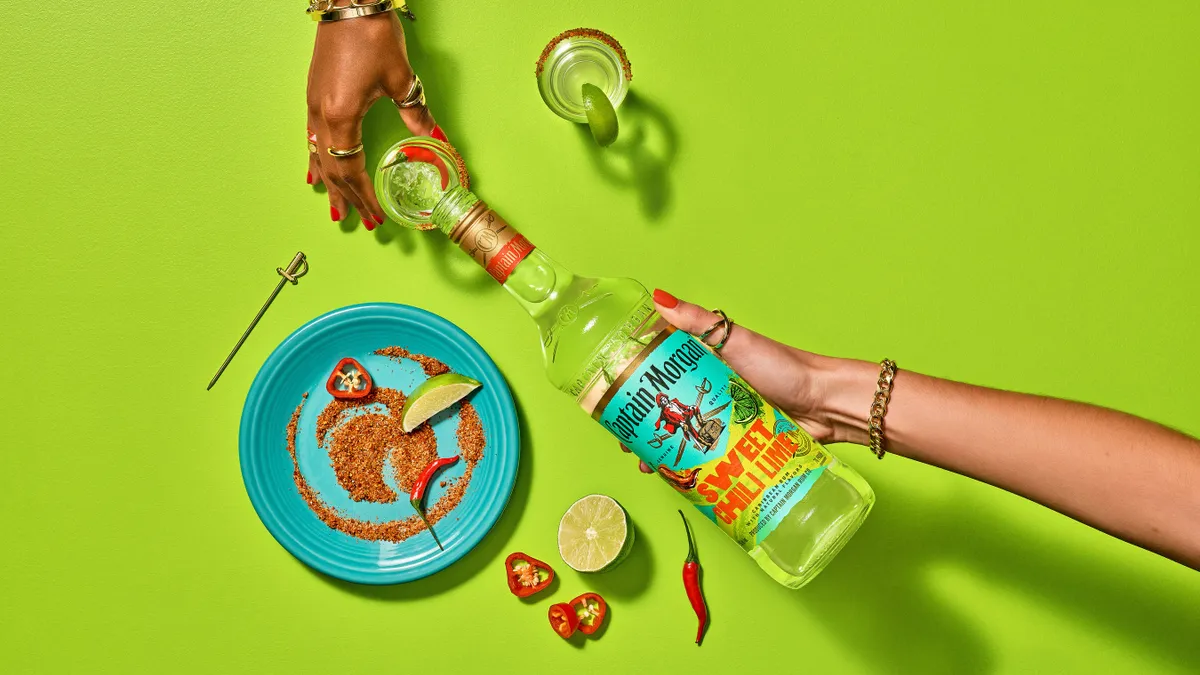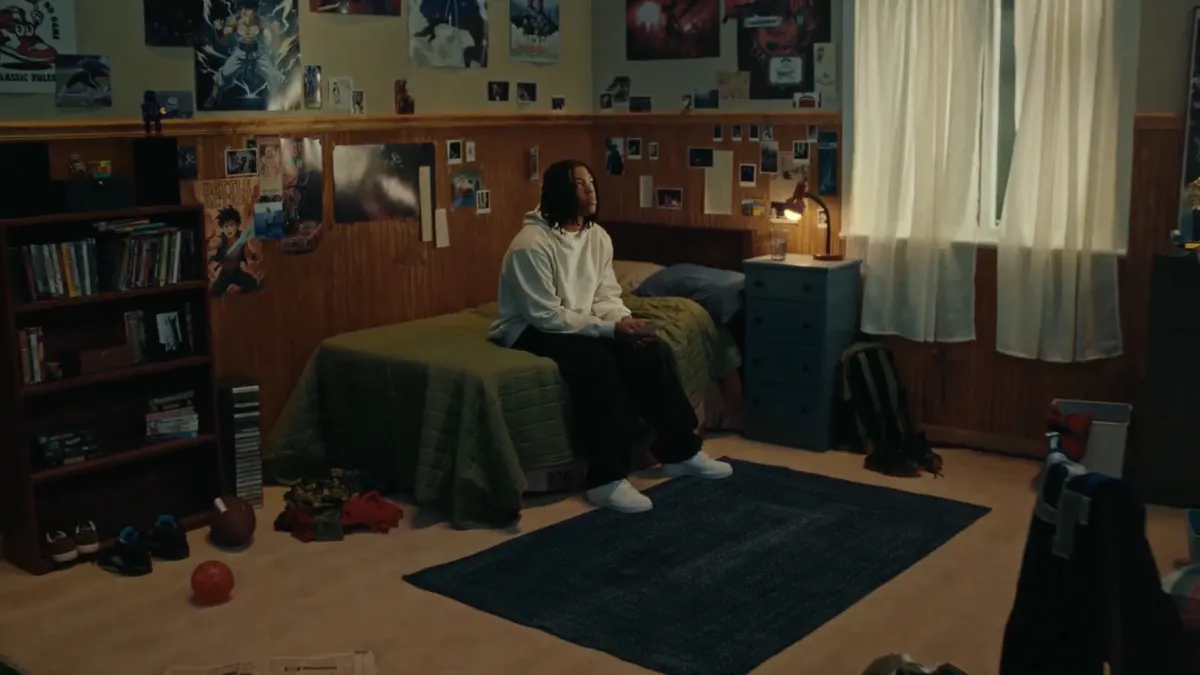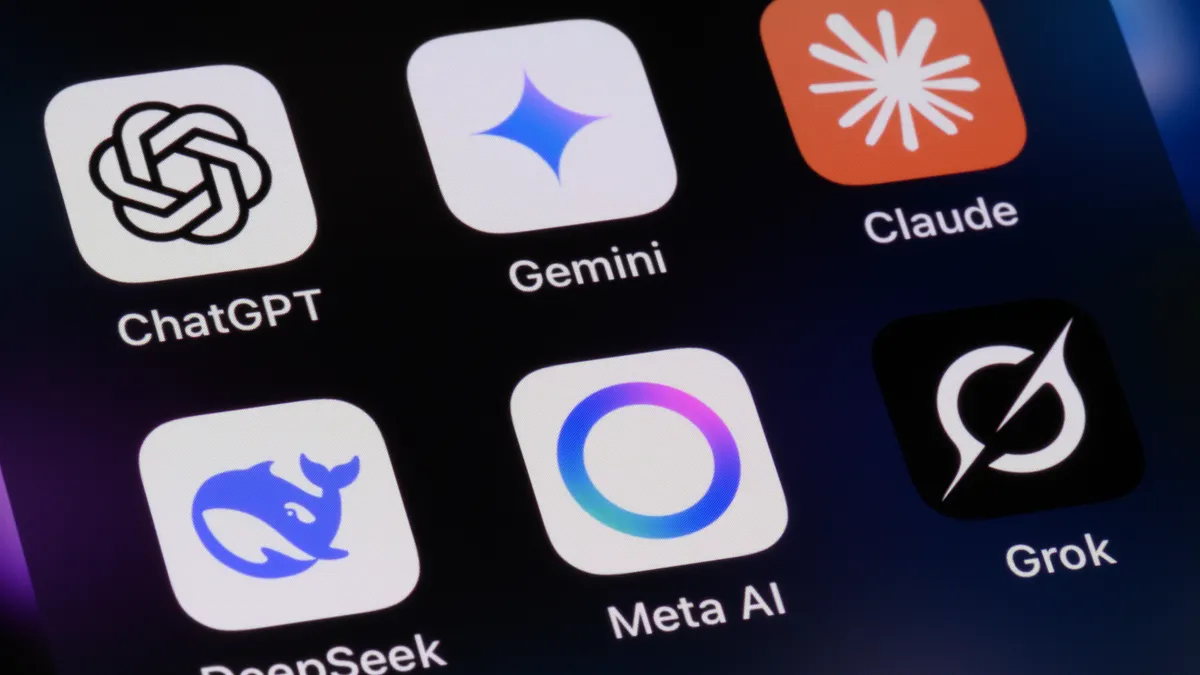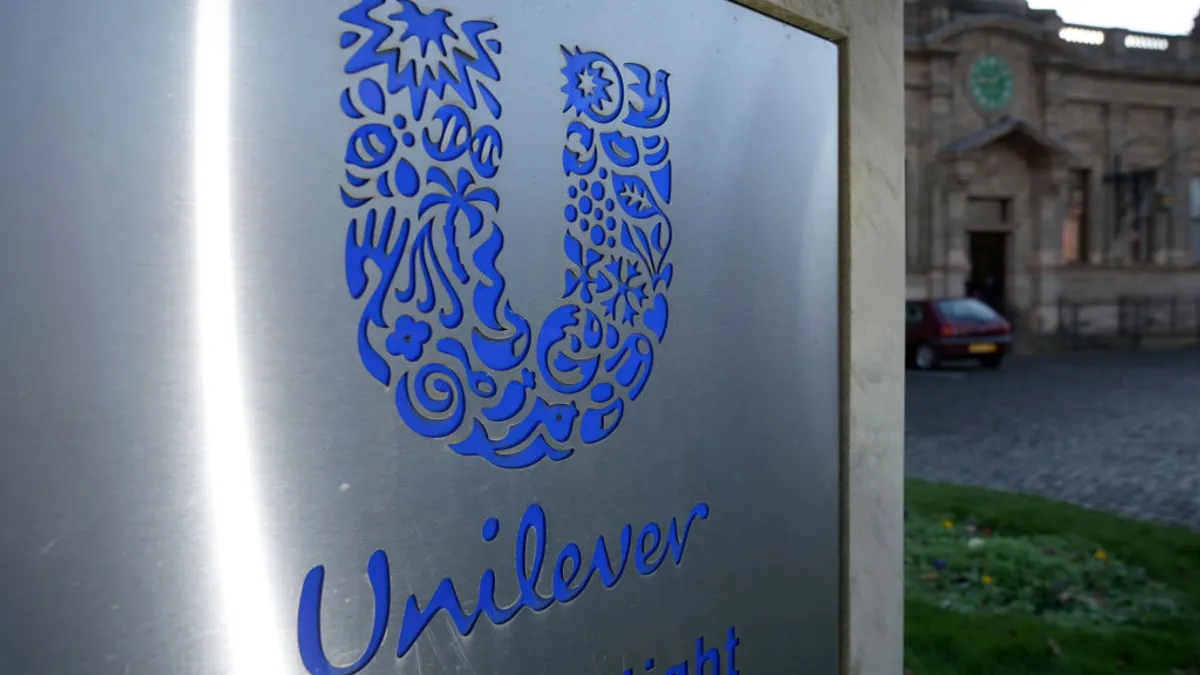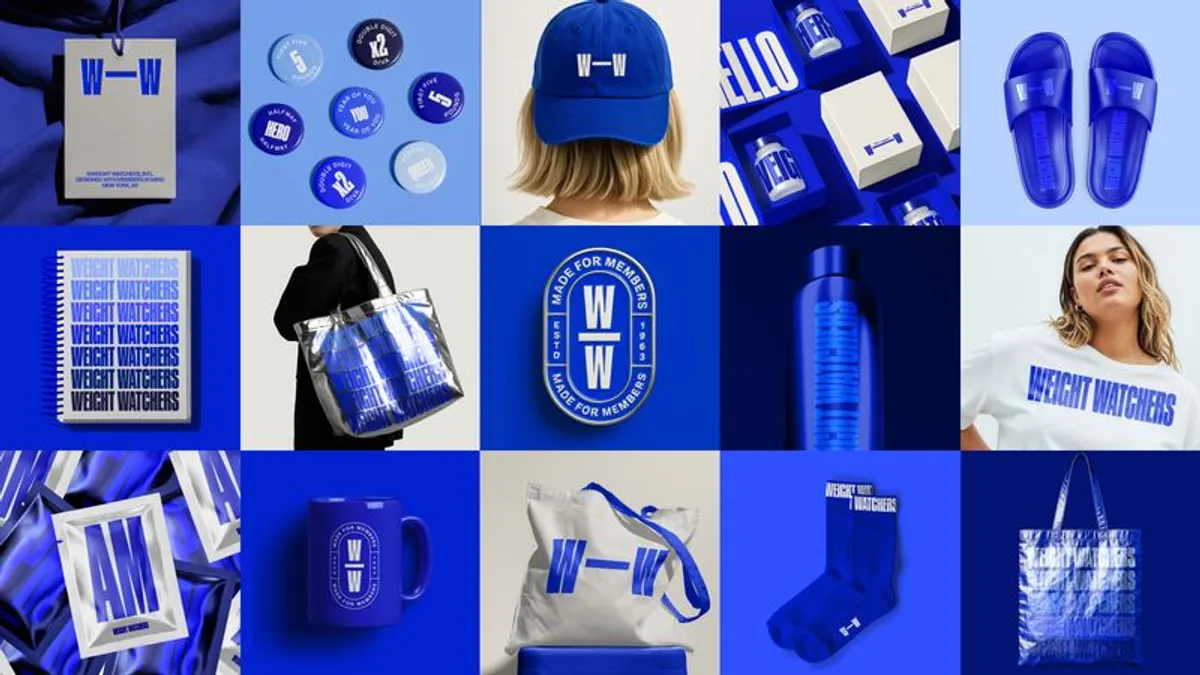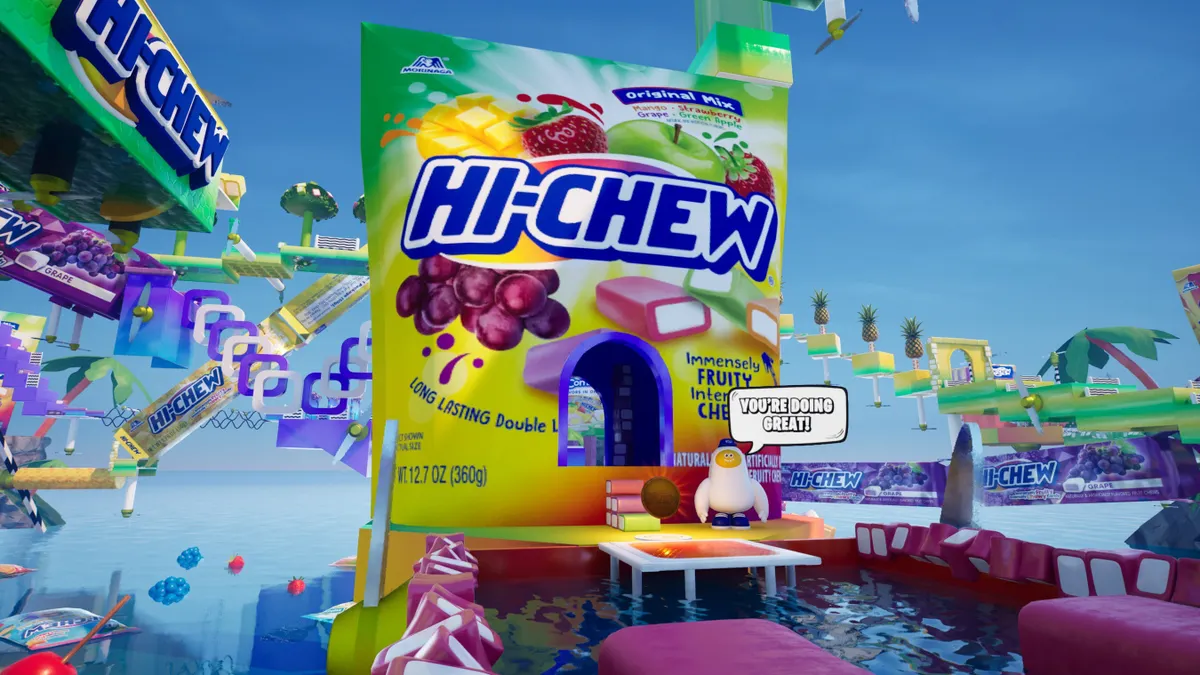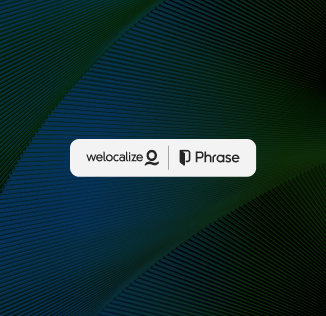Value, cost and well-worn tropes are dominating back-to-school marketing this year. While some would argue that there’s comfort to be found in the familiar during a chaotic period, Gen Z retailer American Eagle is learning firsthand that one person’s comfort can be another’s exasperation. For marketers strategizing ahead of the new school year, the backlash to American Eagle’s big bet on A-lister Sydney Sweeney spotlights the challenge in finding the right message to meet the current moment.
“Sydney Sweeney Has Great Jeans” is designed to help American Eagle resonate with a broad audience and includes prominent out-of-home displays and digital activations. However, wordplay in the campaign that swaps “jeans” for “genes” has sparked backlash for what some see as the promotion of racist ideals, while others have criticized the effort for its sexual overtones. The campaign also raises questions about whether or not marketers have fallen out of touch in their chase to land the sale.
“By using a broadly appealing celebrity and a simple play on words, American Eagle seems to have attempted to speak to everyone, which ultimately means they spoke to no one in a meaningful way,” said Myles Worthington, founder and CEO of full-service marketing agency Worthi, in emailed comments.
American Eagle is one of dozens of brands attempting to win back to school in a tricky retail environment. Social media is playing a dominant role in the chase for Gen Z, providing a channel for driving both online engagement and in-store traffic. Forward-thinking marketers have also sought to build affinity with the rising Gen Alpha cohort — and the key could be through their millennial parents. Underpinning these seasonal efforts are a focus on cost and value as brands attempt to resonate with budget-conscious consumers.
“There’s nothing new going on,” said Otis Gibson, founder and chief creative officer of global brand consultancy Gertrude. “I think innovation as a whole seems to be slowed down in terms of new … in any facet, no one wants new when things are rocky.”
Consumers and brands put value first
Families this season plan to keep budgets tight, with overall back-to-school spending expected to be flat year over year at $30.9 billion, according to Deloitte’s annual survey of the occasion. Nearly half of parents are planning to spread out their back-to-school purchases over time to better manage their budgets, with average spending expected to increase in late August and September compared to 2024 levels.
A bleaker forecast comes as economic expectations dip to their lowest level in the past five years, per Deloitte, making a focus on cost and value paramount for brands. Back to school can also have less flexibility than other sales windows like the holidays, where it’s easier for families to adjust the number of gifts they need to buy, researchers explained.
“This is really deep — my kids need these things, I have to get them,” said Lupine Skelly, retail research leader at Deloitte, of back-to-school products. “They don’t have a ton of wiggle room to actually cut the items, so that makes the price point more important.”
“We’re hyper sensitive now, because it’s every day we’re hearing about tariffs.”

Otis Gibson
Founder & CCO, Gertrude
Value has been at the center for brands including Target, which launched dual back-to-school efforts in June. The first, “Hey Mom, I’m at Target,” highlights perks of the Target Circle 360 program for college students while featuring young content creators as they navigate the complexities of dorm room living. The second campaign, “All of the Above,” made with creative agency Anomaly, emphasizes products that can appeal to parents, teachers and younger kids and features collaborations with teacher content creators.
Value and cost lead among creative trends this season, explained Gibson, noting that the period has seen “more of the same” and a lack of new features, products and benefits promoted. However, as trade wars and recessionary fears loom, the comfort found in familiarity could be exactly what consumers are looking for.
“We’re hyper sensitive now, because it’s every day we’re hearing about tariffs,” Gibson said.
Social-first advertising sways Gen Z
A social-first mentality this back-to-school season is evident among advertisers and mirrors broader industry trends, Gibson said. Social media advertising spending in the U.S. is expected to top $82 billion in 2025, up from $75 billion the year prior. Forty-one percent of shoppers plan to use social media in their shopping journey this season, and those who do typically spend nearly two times more than those who don’t, per Deloitte.
Social media is in full focus for the second iteration of JanSport’s seasonal campaign, “Always With You,” which asserts the backpack maker’s status as an everyday companion for students. Launched in June, the effort was developed for platforms like TikTok and YouTube and follows a successful first run that led to the brand's highest-grossing sales day in its 57-year history. Key to the campaign are a series of musical spots that blend the cringeworthy humor favored by Gen Z with relatable chaos in hopes of stopping them mid-scroll.
JanSport’s campaign, made with agency Party Land, has already shown signs of growth over last year’s push, including higher interaction and longer view times, said Lindsay Read, the brand’s head of marketing. JanSport’s strategy was informed by Gen Z consumer insights and its view of TikTok as a content playground, not just a media channel. It measures success through views and other metrics like saves, shares and comments.
Some marketers have also focused their social media efforts on driving consumers into stores by partnering with big brands like Walmart and Target, said Emily Brown, associate director of strategy at Billion Dollar Boy. The strategy is supported by the insight that Gen Z prefers to shop in-person more often than their millennial or Gen X counterparts, and often includes leveraging influencers for in-store haul videos.
“That’s where they’re putting a lot of those efforts in … getting people to have their brand on their mind as they go through that first big back-to-school shopping haul,” Brown said. “Even those brands that you could go straight to their website and buy directly from them are still trying to put all their eggs in the Target basket or the Walmart basket.”
The approach could appeal to parents seeking the convenience of a one-stop shop experience, with nearly one half of back-to-school shoppers planning to spend the most at mass merchants, per Deloitte.
Brands compete for Gen Z
A focus on in-person experiences is at the heart of Urban Outfitters’ campaign, “UO Haul.” The effort catering to Gen Z began in May with a New York scavenger hunt that led to a fleet of trucks with glass displays showcasing “hauls” fashioned for various dorm room aesthetics. The campaign drove around 10 million organic social media impressions within the first two weeks of its launch, said Head of Brand Marketing Cyntia Leo.
“We know that IRL experiences matter to this Gen Z customer, they want to get out in the world, they want to experience fun, exciting things,” said Leo. “We think that it also creates more of a lasting memory for our customer.”
The second phase of the campaign kicked off in July with “Special Delivery,” a series of events meant to celebrate recent graduates. The concept was inspired by the thousands of letters the brand receives each year from students sharing their feelings about the year ahead and includes a partnership with U-Haul to assist with moving, along with pop-up shops that will roll out in key college markets.
The retailer also launched a Dream Dorm Makeover Contest on Pinterest in partnership with HGTV. Additionally, Urban Outfitters will be on campuses in August and is bringing back its UO Live experience for a second year to feature Gen Z-favorite artists and creators. The campaign, informed by social listening, is part of Urban Outfitters’ long-running efforts to support college students throughout their journey, Leo explained.
“In the last two years, we really wanted to double down on our offense to really make sure that not only were we supporting as a brand holistically, but we were really looking at key insights on what does this customer need and how can we best show up for them?” she said.
For American Eagle, a celebrity tie-up was key to its campaign, a tactic it has relied on in the past through partnerships with stars including Coco Gauff, Lola Tung, Addison Rae and Jenna Ortega. The retailer’s stock soared the day after its campaign with Sweeney debuted in July — and surged again more recently after the effort received praise from President Donald Trump.
“To me, not including any apology to those who they unintentionally offended was weak, and a glaring omission.”

Myles Worthington
Founder & CEO, Worthi
However, the brand’s effort has continued to be the subject of criticism and seen a poor response from Gen Z. One ad in particular, which has since been removed from the brand’s social channels, sees Sweeney whisper, “Genes are passed down from parents to offspring, often determining traits like hair color, personality and even eye color. My jeans are blue.” Some critics believe the script promotes eugenics by suggesting Sweeney’s blonde-haired, blue-eyed genes are more desirable than others.
American Eagle’s campaign emerged amid an already polarized political atmosphere, with the current administration firm in its anti-diversity, equity and inclusion stance. That focus could trickle down into the psyches of marketing executives and drive them to be more cautious in their creative output, explained Mita Mallick, a workplace strategist and former head of inclusion and multicultural marketing for Unilever. To avoid missteps, the executive recommends creating an environment more open to feedback, including from more diverse and junior level staffers.
“Does Gen Z have a voice at the table?,” Mallick said. “The question is, are the people who are writing checks and green lighting this work, are they just so removed from this, or are they also scared of the climate and this current administration and saying that, you know, we’re just going to go back to what was safe.”
American Eagle later released a response on Instagram standing behind its campaign that read, “‘Sydney Sweeney Has Great Jeans’ is and always was about the jeans.” For some, the lack of an apology is seen as a step in the wrong direction.
“To me, not including any apology to those who they unintentionally offended was weak, and a glaring omission,” Worthington said. “It will be interesting to see what their next move is.”
The future of back-to-school marketing
While several brands are keyed in on Gen Z, the back-to-school period also provides a valuable time for marketers to connect with older members of Gen Alpha, the generation born between 2011 to 2025, explained Emily Weiss, principal researcher at Gartner. To do so, Weiss recommends appealing to millennial parents and their Gen Alpha children, whose values are still in flux, with messaging that empowers kids and resonates with family values. Parents involve their Gen Alpha kids in small household decisions as early as age seven, per Gartner research.
“These brands do have the ability to make these inroads with kids fairly early, not in a necessarily invasive way, but because their parents both want their opinions and also do a lot of stuff with them that builds a brand relationship much earlier on,” Weiss said.
One example called out by Weiss is L.L. Bean’s nostalgic back-to-school ad showcasing its backpacks. The spot displays a variety of colorful styles available for the backpack and is set to “Return of the Mack,” a 1996 R&B song by Mack Morrison, a likely appeal to cohorts like millennials and Gen X, the exec explained.
“They kind of were speaking to their own brand values, speaking to the nostalgia of millennials and young Gen X and just getting in their brains to be like, ‘Remember this?’” Weiss said.
Despite being open to branded digital content, 43% of Gen Alpha parents are very or extremely concerned about the impacts of excessive screen time on kids compared to 35% for other parents, per Gartner. The insight backs Weiss’ recommendation to brands to prioritize more offline, sensory experiences that engage both parents and children.
While millennial parents make up 71% of Gen Alpha’s parent group, Gen Z parents are slowly coming into the fold, giving marketers another opportunity to tap into evolving consumer trends. Specifically, Gen Z parents are more fond of digital experiences than their older counterparts: 30% of the cohort plan to purchase directly on social media, compared to 17% of parents overall, according to Deloitte’s Skelly. The group, which is more likely to use social media in their shopping journey in general, also trusts influencer content almost twice as much as other parents.
As brands map out future back-to-school efforts, those who anticipate and adapt to ever-evolving consumer preferences will be in a stronger position to form deeper connections with the next generation of household decision makers.
“We’ve talked a lot about how [Gen Z parents] are going to kind of reshape back to school,” Deloitte’s Skelly said. “Their preferences are so much more digital, and that’s one of the fun things that’s on the horizon … There’s gonna be a good story here in a couple of years once this younger generation has a little bit more purchasing power.”






